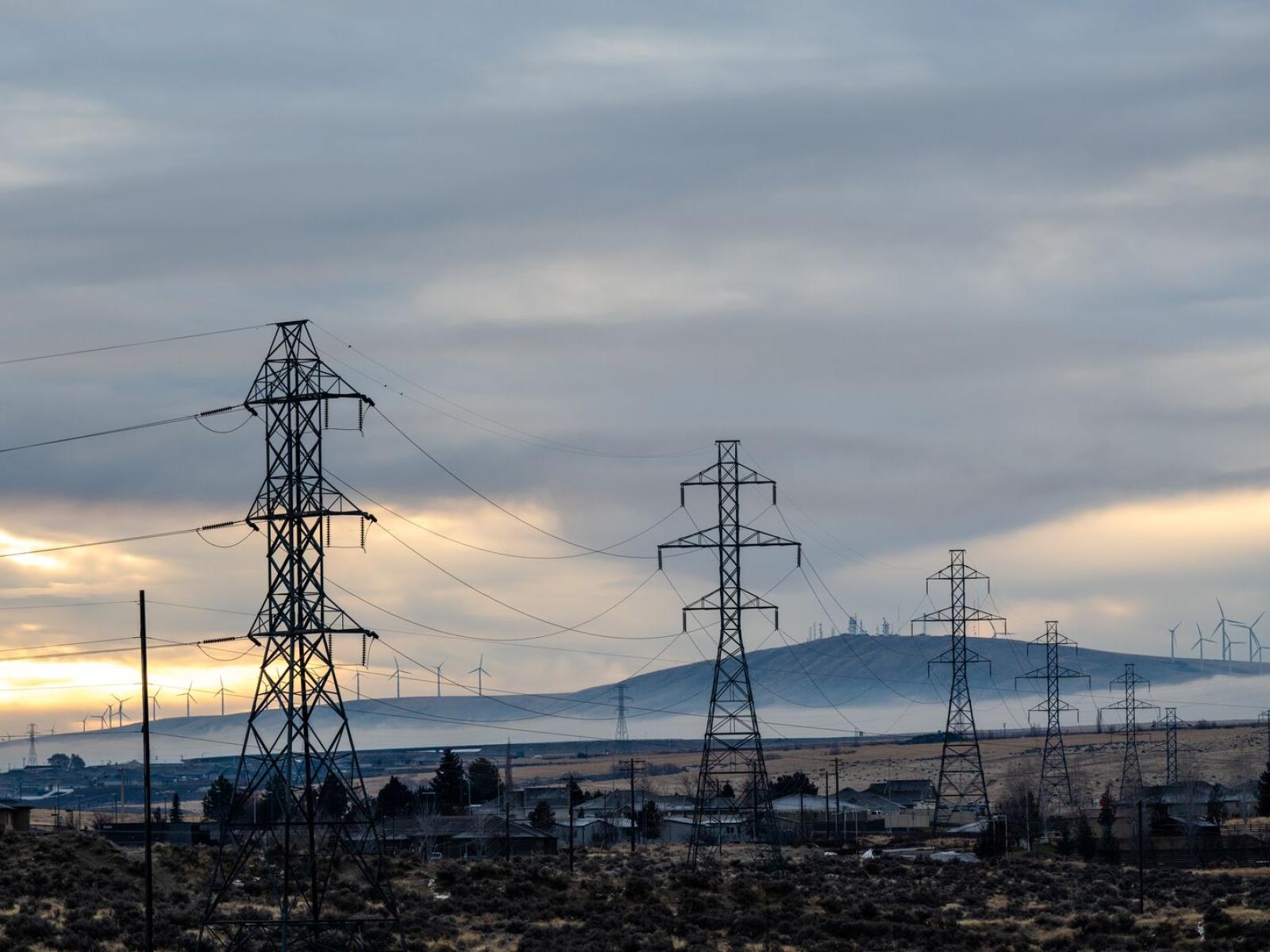PNNL @ 2023 IEEE PES Grid Edge Technologies Conference
Seven researchers participate in international meeting

Scientists and engineers will present PNNL-developed capabilities at the 2023 IEEE PES Grid Edge Technologies Conference and Exposition.
(Image by Andrea Starr | Pacific Northwest National Laboratory)
San Diego, CA
Pacific Northwest National Laboratory (PNNL) researchers bring their expertise to the IEEE PES Grid Edge Technologies Conference and Exposition in San Diego, April 10–13. Scientists and engineers from PNNL will present capabilities the laboratory has developed related to grid edge technologies, including 5G-enabled applications, standards, and tools for grid edge interoperability, grid edge resources leveraged for grid services, coordination across transmission, distribution, and behind-the-meter domains, advances in developing distributed energy resource (DER) testbeds, and high-fidelity simulation capabilities.
PNNL Presentations, Panels, and Technology Stages
Operational Coordination across the Transmission, Distribution, and Behind-the-Meter DomainsGrid Modernization Stage | PNNL Participant: James Ogle  Description: The Department of Energy is examining evolution at the grid edge and undertaking efforts to better understand operational coordination requirements, as well as grid designs, to enable the effective use of DERs. These efforts include examining the evolution of merchant business structures, requirements for coordinating DER services with utility operations, and the underlying grid structure to enable effective control and coordination of DERs. Grid design requirements and coordination frameworks are necessary inputs into grid planning processes. |
Distributed Coordination Framework to Leverage Grid Edge Resources for Grid ServicesGrid Connectivity Stage | PNNL Participants: James Ogle, Shiva Poudel  Description: Integration of renewable DERs and storage at the grid edge, coupled with more efficient buildings and responsive loads, are critical to advancing decarbonization efforts. However, traditional electric system planning and operations are challenged with faster system dynamics and increased variability in supply and demand with more localized effects. New approaches to control and coordination are needed to not only maintain a reliable and safe grid, but to leverage these grid edge resources to improve efficiency, resilience, and equity across the grid. In this panel, a group of industry leaders, including PNNL’s James Ogle and Shiva Poudel, discusses the opportunities and challenges in developing and deploying innovative distributed coordination frameworks to better leverage DERs in distribution system operations. They will provide perspectives on this theme that span utility operational considerations, advanced grid architectures, and controls research from universities and national labs and practical deployment experiences from solution providers. |
5G-Enabled Grid Edge for Immersive Artificial Intelligence ApplicationsGrid Connectivity Stage | PNNL Participant: Xiaoyuan Fan  Description: 5G enables new architectures and frameworks that support a dynamic, near-real-time, end-to-end fabric to assist critical infrastructure operation in a continuously evolving environment. Embracing 5G technologies bridges the gap between energy stakeholders and computing/machine learning (ML) resources to enhance grid asset management through cohesive data integration and intelligent analytics. In this panel session chaired by PNNL’s Xiaoyuan Fan, a series of successful stories are presented on R&D efforts, pilot projects, and visions from broader industrial members, electric research institutes, and national labs regarding the applications of data analytics and ML for distributed and decentralized decisions and control at grid edge. The ultimate goal of this panel session is to connect cutting-edge data analytics and ML theories to real-world problems and show the pathway for artificial intelligence-based technology to address challenges in grid decarbonization. Some PNNL projects related to 5G in this space include (1) 5G Energy Frame project and (2) 5G Innovation Studio. |
Role of DER Testbeds in Advancing and Proofing Grid Edge TechnologiesPanel Breakout | PNNL Participants: Nawaf Nazir, Rohit Jinsiwale  Description: To reduce greenhouse gas emissions, the contribution of renewable generation and DERs is expected to massively increase. Scalable control systems based on network control theory, optimization, and ML are key to managing millions of DERs that provide grid services. However, industry acceptance of these controllers lags due to the lack of testbeds for real-time, real-world validation and the significant infrastructure upgrade required for cybersecure and privacy-preserving implementation. Therefore, the need of the hour is the development of such testbeds to test the equipment and controllers in a real-world environment. In this panel, chaired by PNNL’s Nawaf Nazir, experts from both academia and industry will discuss the state of the art in DER testbeds, novel DER controllers, and the challenges related to bringing new grid edge control technologies to the market. |
Standards and Profiles for Grid Edge InteroperabilityPanel Breakout | PNNL Participant: Jamie Kolln  Description: Variability within the electric grid due to an increase in renewable energy and electrification of traditionally fossil-fuel-based loads can be mitigated by managing flexible loads and distributed resources. However, a lack of interoperability and implementation of standards between systems and grid edge assets requires ad hoc customization, which makes integration costly and creates barriers to participation. This panel, which is composed of senior members of alliances, standards development organizations, and interoperability experts, including PNNL’s Jamie Kolln, will discuss ongoing activities to improve interoperability and increase the successful deployment of grid edge assets to support the evolving smart grid. |
Application of Real-Time (RT) Simulation in Bulk Power System Studies with RenewablesGrid Connectivity Stage | PNNL Participant: Sheik Mohammad Mohiuddin  Mohiuddin Description: RT simulation provides a high-fidelity simulation capability that also enables assessing the performance of an actual hardware in a close-to-real environment through hardware-in-the-loop simulation. This additional fidelity, together with advancements in the computational power of RT simulators in recent years, has led to growing interest in and new applications for RT simulation. This panel, featuring PNNL’s Sheik Mohammad Mohiuddin, presents the latest developments and practices of RT simulation in the design, analysis, and testing of modern power and energy systems. The panelists will present on electric utilities practices and use cases of RT simulation, large-scale grid modeling and simulation, DER integration studies, transmission and distribution co-simulation for DER grid service evaluation, and bulk power system renewables integration studies. |
Tools and Experiences in Grid Edge InteroperabilityPanel Breakout | PNNL Participant: Jamie Kolln  Description: Variability within the electric grid due to an increase in renewable energy and electrification of traditionally fossil-fuel-based loads can be mitigated through the management of flexible loads and distributed resources. However, a lack of standardization between systems and these grid edge assets requires ad hoc customization, which makes integration costly and creates barriers to participation. This panel, featuring PNNL’s Jamie Kolln, will discuss tools and experiences from research, industry, and academia innovators that will inform the audience on how to develop interoperable systems and grid edge assets from initial design through to procurement and deployment. |